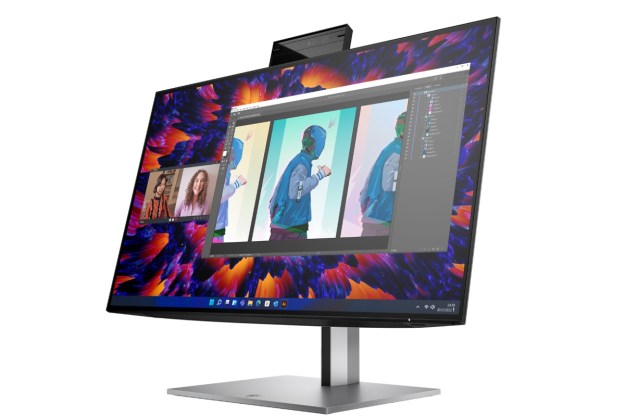“The U820 is a good mobile device for a very specific kind of user.”
- Very portable and light; long battery life; excellent input options; plethora of ports
- Runs too slow for most computing tasks; cramped keyboard; screen is hard to read; mobile broadband just an option; no extra touch software
Summary
Intel has a lot of work to do with the Atom processor before it is ready to power next-gen mobile devices. Crippled for speed, it has very little useful application for anyone who uses a computer for anything more than simple e-mail, Web, media, and time management. Of course, if that describes your needs on the next flight to Tahiti, or if you find most laptops to be overkill when you just need to study at the library, Atom – and the brand-new Atom powered LifeBook U820 Mini-Notebook from Fujitsu – might be just right. The U820 is a fun, eye-catching gadget, but a major disappointment for serious business users and techies.

Get this: the LifeBook U820 is so small at 6.73 inches long, 5.31 inches wide 1.46 inches deep and 1.32 pounds, that it could almost work as a pocket portable. We say almost, because the battery pack makes it s bit too large, unless you have enormous pockets. The black-matte finish, crisp screen, and unusual keyboard all draw your attention. But once you start using the U820, you might not like it as much. The keyboard is definitely cramped, and the system is underpowered for gaming or watching videos. It works okay for music, and the keyboard becomes more bearable as you figure out the tricks. For example, you can type faster with the tips of two index fingers. The gotcha there is trying to use the shift key for caps, especially the A key. Watch out, the finger cramping will start right away if you type more than one page.
Fortunately there are four – yes, four – alternative input methods, including speech-to-text, a stylus, built-in mouse, and touch. We mention speech because the U820 runs the Tablet PC version of Windows Vista, and the unit has a microphone jack. The stylus is very hard to use – the screen resolution is so fine that each specific click does not register very well. The unique mouse controller is much more useful. You move the cursor with a rubber knob on the upper right, and click with a left and right mouse button on the upper left. The U820 also supports touch control. The problem here is that Windows Vista has a poor touch interface. Fujitsu added a very limited touch-enabled widget software program, but it’s just so-so. We opted not to install Windows 7 and test touch features to avoid the ire of Fujitsu. The screen on the U820 also converts to tablet mode, which is handy. The unit has a fingerprint reader, supports Bluetooth, can read SD flash memory cards and CompactFlash, and has one USB port – ideal if you use the device with an external keyboard and want to write a novel.

Fujitsu LifeBook U820
Performance on the U820 is just terrible. Playing a few episodes of The Office on the device was pain inducing, and not just because the character Dwight is so annoying. In full-screen mode, the video would pause and audio would fall behind the video stream. Games are a no-go too, since it has no graphical prowess for 3D or even 2D games.
The display is just annoyingly crisp – it runs at 1280 x 800 so you will find yourself squinting like Clint Eastwood any time you use it. Ratcheting down the resolution doesn’t help, because it just means Windows does not use the entire screen. Another caveat to mention is that the U820 does not have built-in mobile broadband, although you can easily use a USB adapter for that service. Fujitsu says it is available as an option on this unit.

We liked using the U820 as a movie and photo playback device. Sure, it’s an expensive MP3 player, but the 120GB hard drive is spacious enough for every one of your Neal Diamond MP3 files, and much more. Photographers will love using the device for slideshows. Fujitsu offers an option to install a 64GB SSD drive and forego the HDD, which would make it just a tad lighter.
Conclusion
Overall, the U820 is a good mobile device for a very specific kind of user. Gamers and those who want to type up long documents should avoid it. Kids might really like the small keyboard and webcam. It’s an excellent music and photo machine. If the cramped screen and keyboard don’t make you want to chuck it off a cliff, it is a good choice – especially for the mobility and multiple input options.
Pros:
- Very portable and light
- Long battery life
- Excellent input options
- Plethora of ports, like CF and SD
Cons:
- Runs too slow for most computing tasks
- Cramped keyboard
- Screen is hard to read
- Mobile broadband just an option
- No extra touch software


